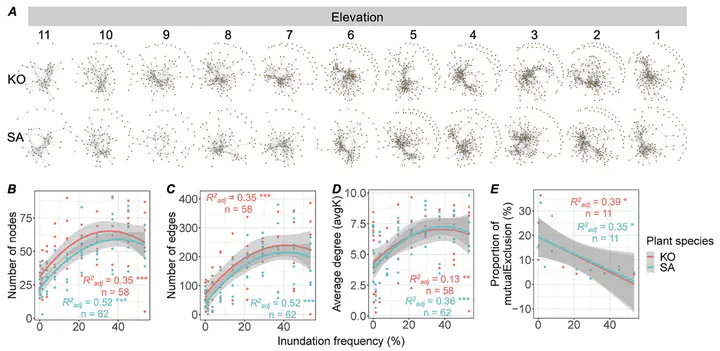Increasing Inundation Frequencies Enhance the Stochastic Process and Network Complexity of the Soil Archaeal Community in Coastal Wetlands

Abstract
Coastal wetlands are experiencing frequent flooding because of global climate changes, such as the rising sea level. Despite the key role of archaea in soil biogeochemical cycles, the assembly processes and co-occurrence patterns of archaeal communities in coastal wetlands in response to increasing inundation frequencies remain elusive. In this study, we established an in situ mesocosm with an inundation frequency gradient to investigate the response of soil archaeal community toward increasing inundation frequencies in monocultures of Spartina alterniflora and a man- grove species, Kandelia obovata. Both neutral community model and null model analy- ses suggested that stochastic processes are dominant in governing the archaeal com- munity assembly and that the stochastic processes are enhanced with increasing inundation frequencies. Increasing inundation frequencies significantly increased the community niche width. Moreover, archaeal community in S. alterniflora soil displayed lower niche overlap and higher stochasticity than in K. obovata soil. Co-occurrence network analysis revealed that the network complexity increases with increase in the inundation frequencies. Soil water content is the most decisive factor influencing the archaeal communities. Overall, we found that increasing inundation frequencies enhance the stochastic processes and network complexity of the soil archaeal com- munity in coastal wetlands. This study could enhance our understanding on the response of soil archaeal communities in coastal wetlands toward global change.